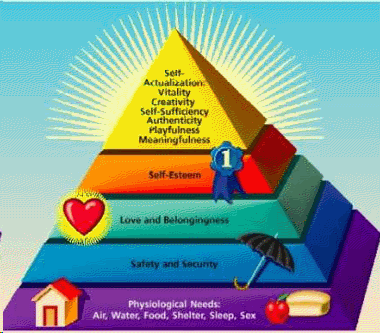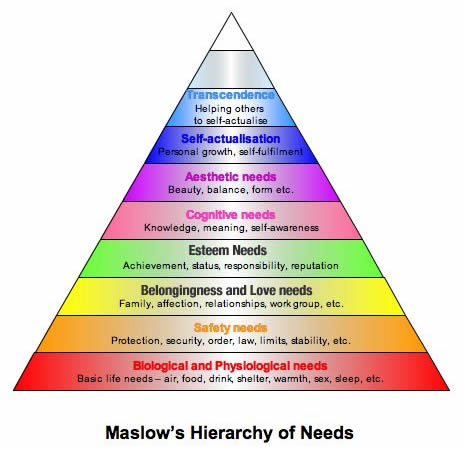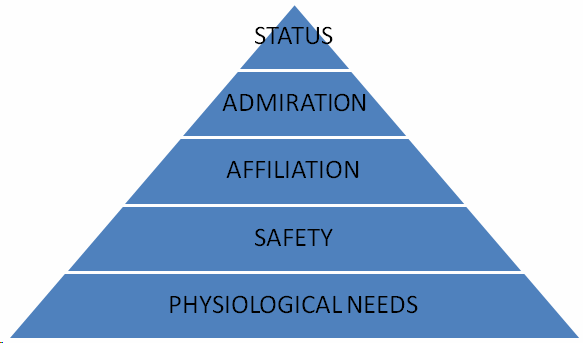|
Results - Eva on Holidays
MASLOW's
PYRAMID
Everybody heard about this:
Maslow created a visual aid to explain his theories; he called it
the Hierarchy of Needs. It is a pyramid that depicts the levels of
humanistic needs, psychological and physical. When a human being
executes the steps of the pyramid then that individual will have
reached self actualization. The bottom of the pyramid is the “Basic
needs” of a human being, food and water. The next level is “Security
and Stability.” These two steps are important to the survival of the
person physically. Once the individual has basic nutrition and shelter
then they instantly look to accomplish more. The third level is “Love
and Belonging,” this is a psychological need, once the individual has
taken care of themselves physically then they are ready to share
themselves with others. The fourth step occurs when the person feels
comfortable with what they have accomplished then they have reached the
“Esteem” level. This level is success and status. The top of the
pyramid is “Self-actualization” that occurs when it is believed that
the individual has reached a state of harmony and understanding. (The
Developing Person through the Life Span, (1983) pg. 44)
Maslow looked at historical figures, also people who he knew, that
he felt clearly met the standard of self actualization, to base his
study on. He studied many people; Albert Einstein was one of those
figures. Maslow looked at his writings and his accomplishments
throughout his life time and began creating characteristics of the self
actualized person. He realized that the individuals who he was studying
had similar personality traits. They were all “reality centered”
meaning that they were able to differentiate what was fraudulent from
what was genuine. They also were “problem centered” meaning that they
treated life’s difficulties as a problem that demanded a solution.
These individuals also were all right being alone and their personal
relationships were healthy. They had only a few close friends and
family rather than a large amount of shallow relationships. While Maslow's theory was regarded as an improvement over previous theories of personality and motivation,
it had its detractors. For example, in their extensive review of
research which is dependent on Maslow's theory, Wahba and Bridgewell
found little evidence for the ranking of needs Maslow described, or
even for the existence of a definite hierarchy at all. Wikipedia Also,
we can find many examples of people who exhibited at very least aspects
of self-actualization who were far from having their lower needs taken
care of. Many of our best artists and authors, for example, suffered
from poverty, bad upbringing, neuroses, and depression. Weren’t these people engaged in some form of
self-actualization?
A western idea?

Maslow extended:

The pyramid in Asian societies:

John Ap (2006)
|
DEBATE
Please form two
groups of four people each. One will be the pro-Maslow
and one will be the anti-Maslow group of researchers.
The
other students are the audience.
After the break we will have
the debate.
|
|



